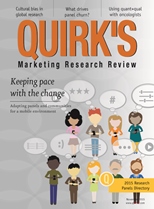Editor’s note: Michael Porter is the director, University of St. Thomas Master of Business Communication program, St. Paul, Minn.
It’s that window of certainty between Halloween and Thanksgiving when corporate human resource people face an annual anxiety. Not the hiring of staff for the holiday rush but the toughest sell of the year: getting employees to complete their annual benefits enrollment on time. Whether you are the owner of a business or simply manager of people in a major corporation, you end up on the hook for part of this selling process, too.
These efforts have multiple barriers working against the internal marketers involved. The material is complicated, lengthy and important. Like taxes, everyone knows it has to be done. Many employees also dread the process – in no small part because people don’t want to be wrong. Unfortunately, there’s not a TurboTax for health care benefits calculation.
Sometimes it feels like completing the forms – online or on paper – is just filling in dots on a lottery card. Choose wisely and you dodge the bullet. Choose poorly and you either spend too much on insurance or too much on care. If one psychological barrier to getting this tedious paperwork done stems from this concern, perhaps there is more to be done than inviting employees to an information session with the insurance rep. Maybe the language being used is not plain enough, the sentences are too long or the words are literally foreign to the audience.
More of us are working with people for whom English represents a second or third language. One school district in an outer ring suburb of Minneapolis recently reported having students that spoke at least one of 25 native languages at home. The parents of these kids are working somewhere and someone has to keep them on task to be insured.
On top of all these challenges, communicators must convince people to take an action – the hardest part of the persuasion process. (Ever see someone take a sample at the store and drop it in the next waste basket untouched? It was right there in his hand, yet the trial did not occur!) Plus, that action has to be completed by a specific deadline.
To generate any action by an audience, there must be an incentive that outweighs the disincentive (i.e., anxiety over deciding, frustration with the time it may take, etc.). Companies today use a variety of incentives, including cash and non-cash (prizes, etc.). There are many benefits to integrating incentives to facilitate engagement but only about half of companies use these options.
In some organizations, HR communicators get supplemental help from supervisors and middle managers, whom the department holds responsible, to a degree, for the compliance of employees they oversee. Still, managers must be provided with tools for success – such as e-mail templates and flyers – so things still land in the court of the employee communication staff.
In other firms – even with the advent of online forms – the best practice seems to be tenacity. Employees receive reminders at every turn. While internal communication leaders don’t see themselves as marketers, they rely on deeper frequency and reach for promotional messages than marketing communication pros do in advertising.
So, in considering the menace that is your annual benefits enrollment, think about what it took to encourage that action in timely fashion. Then be glad you weren’t the one responsible for making it happen.
